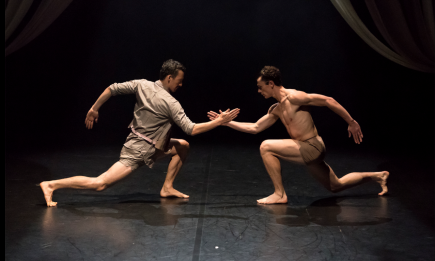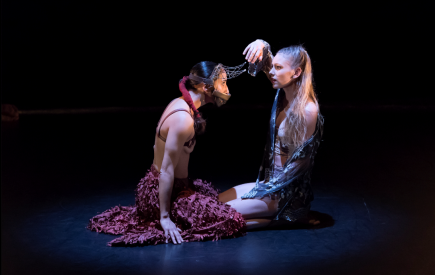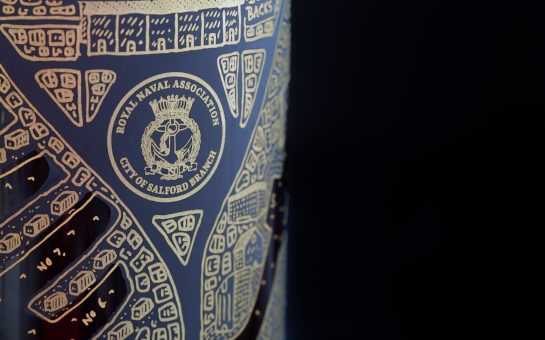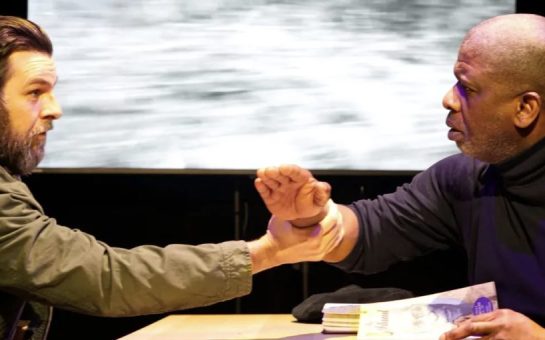TORO: Beauty and the Bull follows the story of a young prostitute in South America. Playing at the Lowry’s Quays Theatre, Carlos Pons Guerra choreographed this Spanish reading of Beauty and the Beast, which worked well in the intimate setting.
Guerra’s choreography helps explore the experiences of those who don’t fit into society, confidently delving into worlds of freak, sex and circus.
After some intense smoke machine action – prompting some coughing in the audience – men enter dressed in dirty-looking shorts and began a stylised game of rock, paper, scissors.
The costumes look Mad Max-inspired. Wire animal masks, leather and metal harnesses, and floaty material for The Girl, lend themselves to images of bondage, combat and even torture.
The brown and smoky mistiness of the staging is almost otherworldly and serves as a circus desert setting in the second act and a brothel in the first.
Emma Walker plays The Girl, who is sexually exploited by a dominant group of men in a brothel during the opening scene.
Walker tip-toes vulnerably and fluidly across the stage. She provides an excellent contrast to the jerky, powerful and at times clumsy movements of the conquistador-like males.
 GRIPPING: The contemporary dance tells the story richly
GRIPPING: The contemporary dance tells the story richly
However, she also puts across a deep allure and is most desirable when the men who had dominated her are in-fighting amongst themselves.
Marivi Da Silva also stands out as The Bull. She dons the wire horns and mask for a fiery, female portrayal of the creature who tries to rescue The Girl.
In the first act The Girl and The Bull share intimate moments after some initial caution, rolling across each other, their bodies intertwining.
The connection between bull and girl is one directly opposed to the dominant imposition of masculinity, brought on by the male performers.
In a leaflet handed out to the audience before the performance, Guerra says that TORO portrays his ‘most feared monster: the white alpha (and often fascist) male.’
His choreography of the white male dancers does achieve this, as they harass and abuse the woman of the piece, who could actually represent any one outside thing able to be conquered by a male fascist order – foreign lands, virginity, freaks, homosexuals.
It’s not all doom and gloom though: the audience cackled away at the sexy male oppressors descending into squabbling chicken squawks after losing The Girl to The Bull.
 THEMES: The audience is thrown into a world of freak, sex and circus
THEMES: The audience is thrown into a world of freak, sex and circus
Aside from a few chicken squawks, the performers are silent throughout, save for their breathing when the dramatic music cut away – a remarkably stark human aspect of an otherwise crazy animalistic piece of work.
A highlight of TORO is the interaction between The Bull and The Girl in the second act. At the height of their intimacy the pair caress one another while a Spanish version of Unchained Melody plays. Unlike the original in Ghost there is a third participant here, as one of the men is upstage aping the two women.
Music plays a big role in the piece. Mambos, pasodobles and Mexican rancheras are all used to set tones of passion, intimacy and debauchery.
The Spanish belly-fire of matadors is balanced by the tragedy of a non-conformist vulnerability.
TORO is built on contemporary dance rather than classic ballet. Ballet body shapes and pirouettes feature, though more often than not the story is lived through dancers crawling about and intermingling their bodies.
More dancing would have been nice, and probably would have given the passion and danger of the work a different angle.
However, the contemporary dance and movement did tell the story richly. It’s gripping to watch, and TORO’s sexual energy – which it has bags of – finds itself expertly.
Audiences are in for a treat with this one and will probably go away seeing Ghost’s pottery scene in an even weirder light.



